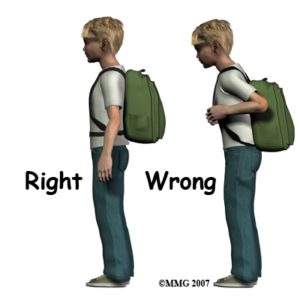- Gavilan Peak School
- Save Your Back - Backpack Wearing Tips
-
"Back to school" doesn't have to include back problems!
Kids fill their backpacks with heavy books, computers, notebooks, etc. and haul them from class to class. It is important your student has an appropriate sized backpack to ensure that they are wearing it properly. Wearing heavy backpacks improperly can result in back/neck/shoulder problems, headaches, changes in the way your student walks, increases the chance of developing scoliosis, and can lead to potentially serious and/or chronic injuries. Here are some quick tips to correctly position and carry the load of a backpack.

- Students should always wear both shoulder straps (vs slinging the bag over just one shoulder).
- Adjust the shoulder straps so that the backpack is higher up on the back, not sagging down low on the waist or resting on the bottom.
- The backpack should not sway from side to side during walking. If it does, the straps are too loose.
- If the backpack has a strap across the upper chest or waist area – use it. These extra straps help keep the shoulder straps in place, reduce sway, distribute the weight load to the hips, and relieve shoulder pressure.
- The heaviest items your student carries should be placed closest to the child’s back and packed so as not to slide around.
- A child’s backpack should never weigh more than 10% of their body weight. If backpacks are too heavy and/or are worn for prolonged periods, compression can develop on nerves or arteries that pass from the lower neck to the armpit, causing pain, weakness, tingling, and other problems.
